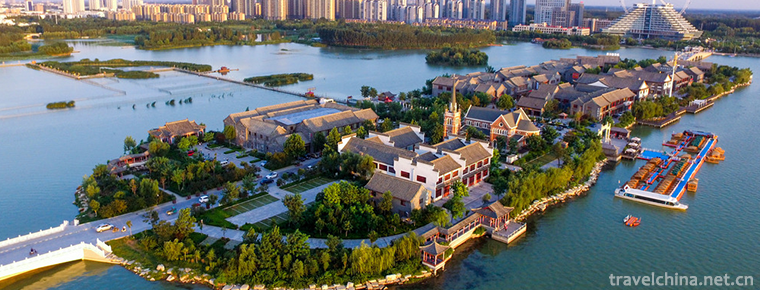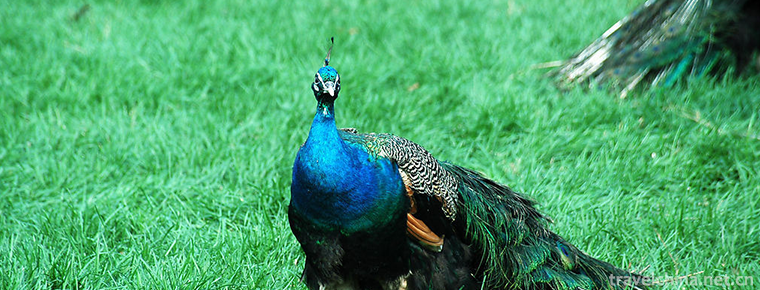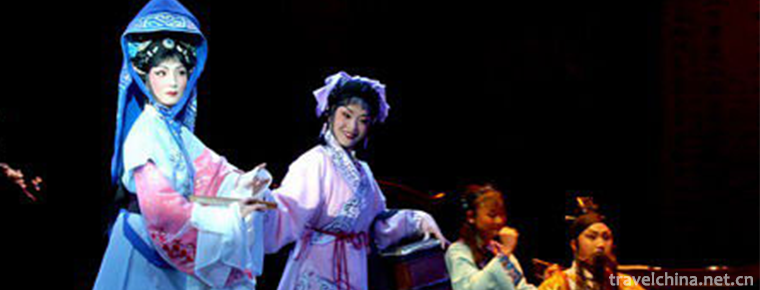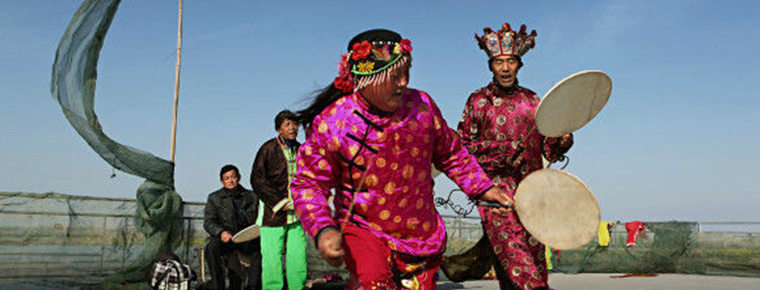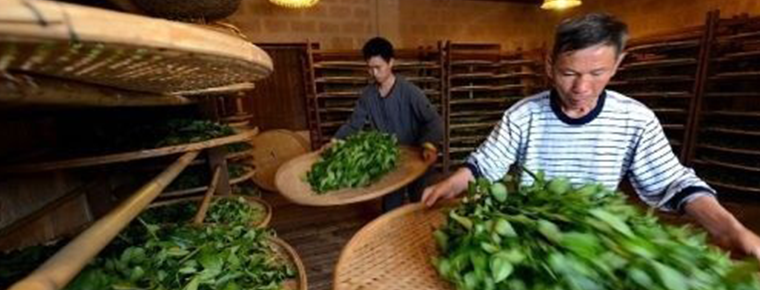Tianhe mountain
Tianhe mountain
Tianhe Mountain, located in Xingtai City, Hebei Province, is China's Love Mountain, the hometown of Chinese Qixi Culture, and the birthplace of the legend of Cowherd and Weaver Girl. Tianhe Mountain is a national AAAA-level scenic spot, a national key scenic spot and a national geological park. The scenic spot stands in the greenest place of Taihang Mountain at the junction of Shanxi and Hebei, with a total area of 30 square kilometers.
Tianhe Mountain is 50 kilometers away from Xingtai City, far from the noise of the city, where Qifeng is forested, valleys are graceful, vegetation is abundant, and trees are lush; waterfalls and snowfalls, clear springs and zither singing, water is abundant, is the famous "Taihang Water Town"; Songtao battle, cattle and sheep flock, also known as the "Yunding Grassland". As early as the Neolithic Age, the Tianhe Mountains were inhabited by human beings. During the Anti-Japanese War, Tianhe Mountain was one of the main bases of the Eighth Route Army. The 129 Division Hospital and the Revolutionary Sites of the Bank of South Hebei (the predecessor of the People's Bank of China) are well preserved.
The story of Cowherd and Weaver Girl is widely spread in Tianhe Mountains, and there are a lot of cultural relics. This is the birthplace of the story of Cowherd and Weaver Girl, which has been verified by many experts. In 2005, Tianhe Mountain was registered as "China Love Mountain" by the State Administration of Industry and Commerce. In 2006, Tianhe Mountain was named "Qixi Cultural Research Base" by the Chinese Folklore Society and "Qixi Cultural Town" by the Chinese Folk Literature and Art Association. In 2015, Tianhe Mountain Ice and Snow World, the first mountain skiing resort in Central Plains of China, was built.
Scenic spots
The story of Cowherd and Weaver Girl is widely spread in Tianhe Mountains, and there are a lot of cultural relics. This is the birthplace of the story of Cowherd and Weaver Girl, which has been verified by many experts. In 2005, Tianhe Mountain was registered as "China Love Mountain" by the State Administration of Industry and Commerce. In 2006, Tianhe Mountain was named "Qixi Cultural Research Base" by the Chinese Folklore Society and "Qixi Cultural Town" by the Chinese Folk Literature and Art Association.
Tianhe Mountain Scenic Area is a national AAAA level scenic spot, a national key scenic spot and a national geological park.
In 2015, Tianhe Mountain Ice and Snow World, the first mountain skiing resort in Central Plains of China, was built.
Tianhe Mountain is a dazzling pearl in Taihang, a thousand miles away. The main attractions are: Hanque Gate, Lotus Fragrance Garden, Yingbin Dam, Tianhe Lake, Love Square, Yuanyangchi, Lingbo Lake, Dishengu Valley, Lingshui Lake, Nine-day Galaxy, Tianmen, Bilian Pool (Pot Cave), Waterlily Pool, Valley of Lovers, Niulangzhuang, Xianren Peak, Queqiao, Yueliao Peak, Notre Dame Temple, Fuziyan, Yunding Grassland, the first in the world, etc.
Ice and snow world
Tianhe Mountain Ice and Snow World is located on the top of China's Love Mountain, 1496 meters above sea level, with a total area of 80,000 square meters.
Ice and Snow World is located at the junction of Shanxi Province, Hebei Province, 70 kilometers east of Xingtai City, 34 kilometers west of Heshun County Town, convenient transportation, high-speed direct access (under Qiaozhuangkou Xingfen Expressway). Around ten thousand mu of pine forests, there is a magnificent scene of forest, sea and snow plain. There are also unique scenery such as cloud sea, sunrise, forest, Buddha light and so on. It is a rare comprehensive tourist area for sightseeing, sports and fitness, leisure and vacation, and business meetings in southern Hebei.
The snow cover period is from the end of November to the end of March of next year. The snow cover thickness is more than 50 centimeters. With artificial snowfall system, the winter skiing period is prolonged. The ski resort can accommodate 2,000 people skiing at the same time. There are also all-terrain snowmobiles, serpentine sleds, snowboards, flying saucers, children's sleds and so on, forming more than ten kinds of snowfield recreational projects.
Traffic information
geographical position
Tianhe Mountain is more than 50 kilometers away from Xingtai City, with convenient transportation.
(1) You can take a direct flight to Shijiazhuang, then take a bus to Xingtai and then transfer to Xingtai-Tianheshan special line car to the scenic spot.
(2) You can take the train directly to the downtown area of Xingtai, and then take the Xingtai-Tianheshan special line train to the scenic spot at Xingxi Bus Station. The special train starts at 7:30 a.m., and leaves at half an hour. The last bus to the scenic spot takes 3:40.
(3) Driving from Xingtai exit of Beijing-Shenzhen Expressway to Xingzuo Highway (S323 Provincial Highway) from the west along the intersection of Xingtai North Outer Ring Expressway, 50 kilometers later to the scenic spot.
(4) Xingfen (Donglu) high-speed through scenic spots.
Driving line
The eastern direction of the city (with Xingtai as the center): 1. Shandong Province direction: the provincial cities (Jinan, Liaocheng and other Southeast directions) - Qingyin Expressway (Xingtai direction) - Xinglin Expressway - Xingfen Expressway (under Luokou Road) - Xingzuo Highway (driving 17 kilometers) - China's love mountain scenic spot.
Southern Direction City (Xingtai City as the center): 1. South Xingtai City - 107 National Highway - Dongmazhuang Xingfen Expressway (under Luluokou) - Xingzuo Highway (driving 17 kilometers) - China Love Mountain Scenic Area. (2) The city south of Xingtai - Jing-Hong Kong-Macao Expressway - Xingfen Expressway (under Luokou Road) - Xingzuo Highway (driving 17 kilometers) - China Love Mountain Scenic Area.
City in the west direction (centering on Xingtai City): 1. Shanxi Province direction: Taichang Expressway - Yushe - Zuoquan - Xingzuo Highway - China Love Mountain Scenic Area (out of Shanxi Province boundary).
North-facing cities (centering on Xingtai City): 1. North-facing cities of Xingtai - Beijing-Hong Kong-Macao Expressway - Xingfen Expressway (under Luokou Road) - Xingzuo Highway (driving 17 kilometers) - China Love Mountain Scenic Area. (2) The city north of Xingtai - Jing-Hong Kong-Macao Expressway (Neiqiu South) - Xingheng Expressway (driving westward) - Xingfen Expressway (under Luluokou) - Xingzuo Highway (driving 17 kilometers) - China's Love Mountain Scenic Area.
Tianjin Directional City: Tianjin - Daguang Expressway - Xingheng Expressway (driving westward) - Xingfen Expressway (under Luluokou) - Xingzuo Highway (driving 17 km) - China Love Mountain Scenic Area.
Practical information
Opening Hours
7:00-19:00
Ticket information
Adult tickets are 70 yuan per ticket per person.
35 yuan per ticket per student;
Off season: 50 yuan per person per year (December 1-February 28)
Notes for ticket purchase: 1. Opening time of scenic spots: 24 hours (it is recommended that tourists visit scenic spots before 18:00 is the best)
(2) Children: No ticket for height below 1.2 meters, and student tickets for height above 1.2 meters with student certificate.
Old age: Older people over 60 years old buy old age tickets at half price with ID card, and older people over 70 years old are free of tickets.
Project price
Human CS50, Passionate Drifting 98, Climbing 50, Collision Ship 60 (RMB) One Person
Xingtai is located in the eastern foot of Taihang and the West Bank of the ancient Yellow River, and it is one of the oldest cities in Hebei Province. It is the "hometown of Chinese Qixi" culture and the "cultural research base of Chinese Qixi". Tianhe Mountain Scenic Spot is the birthplace of the legend of "Niulang and Zhinv", which includes Tianhe Liang, Lao Niuyan, Niulangzhuang, Zhinv Feng and Queqiao. Many legends about the love of Cowherd and Weaver Girl are widely spread among the local people. Folk culture is rich in resources. It is a wonderful flower in the excellent history and culture of Hebei Province. It is also a valuable resource for the construction of advanced socialist culture. In 2005, it was registered as "China Love Mountain" and named "Qixi" as the hometown of love culture by the Chinese People's Association.
Pictures From:
http://bbs.fengniao.com/forum/4759340.html
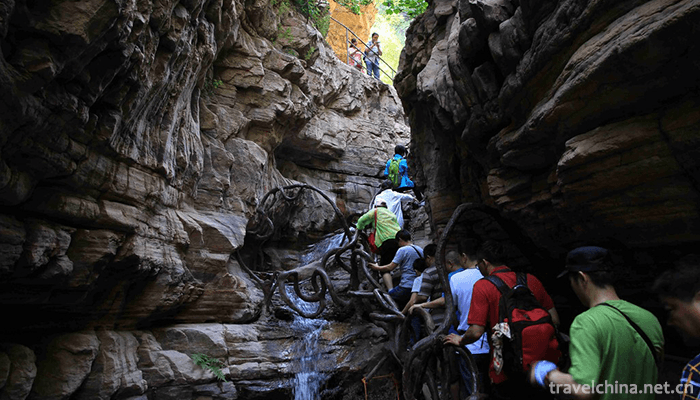
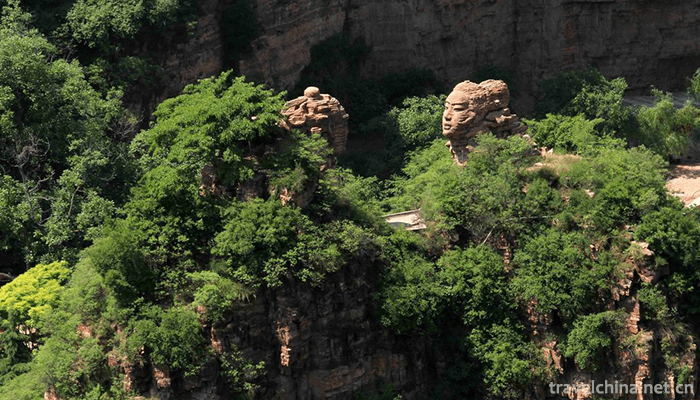
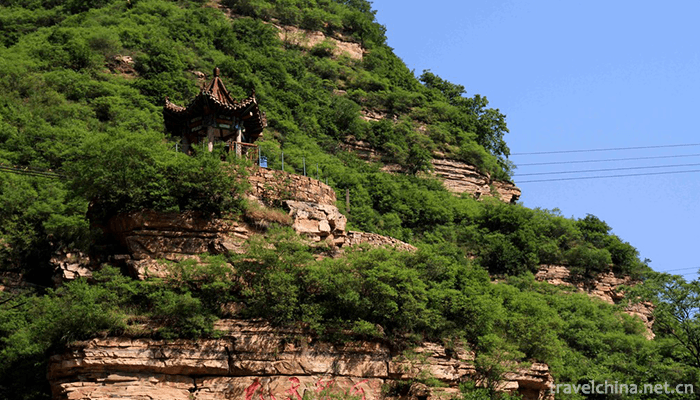
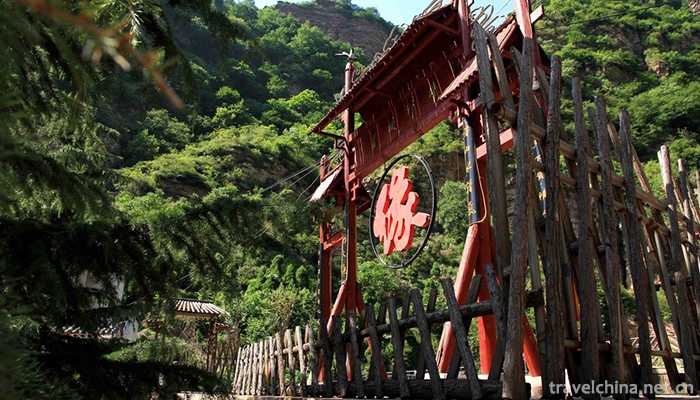
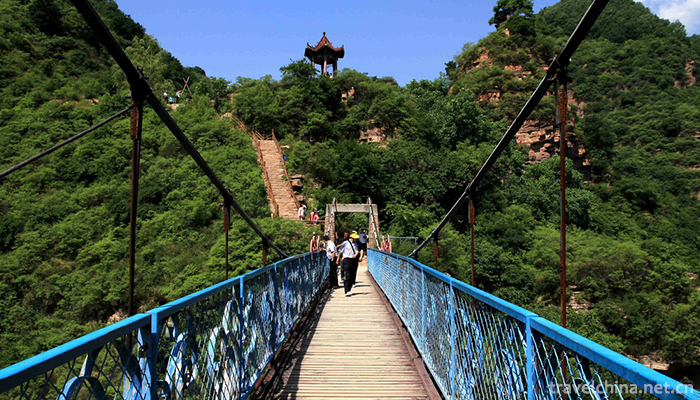

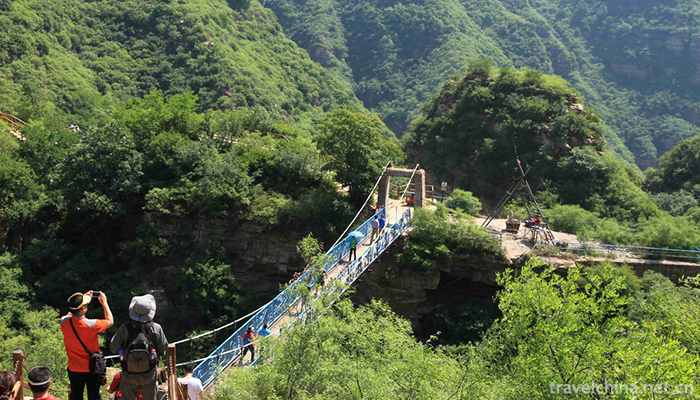
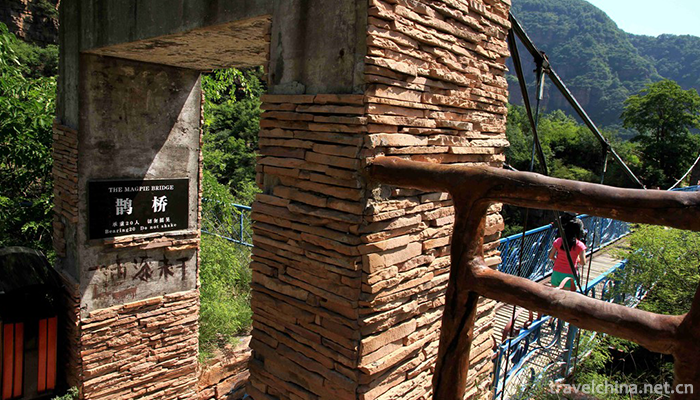
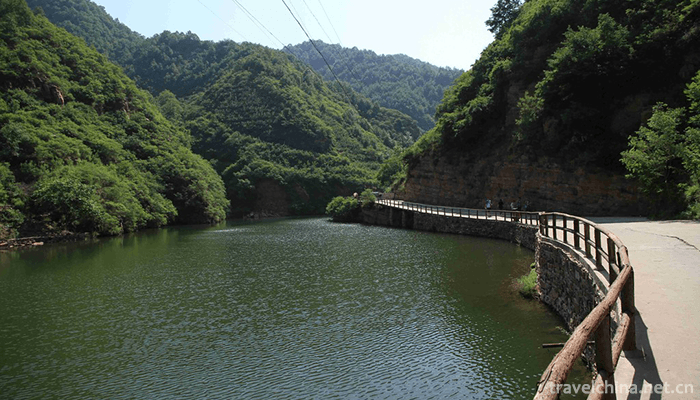
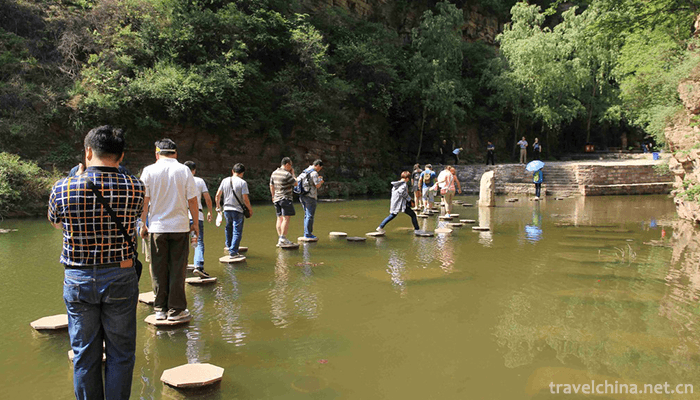
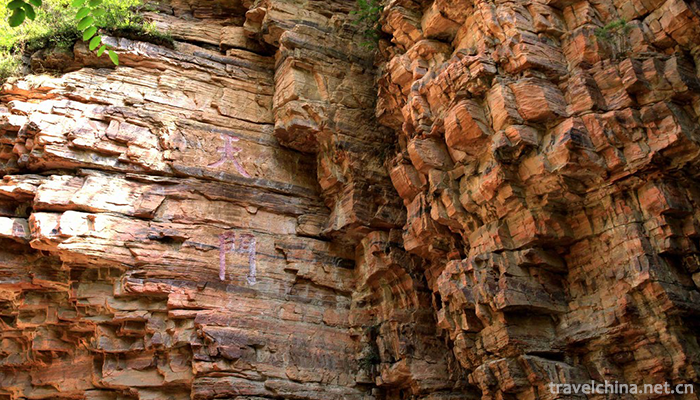
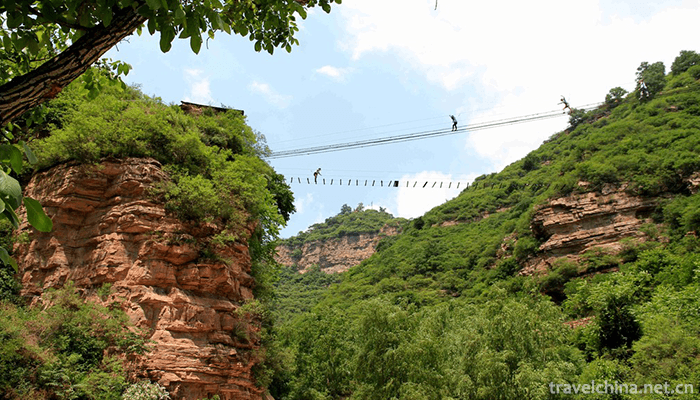
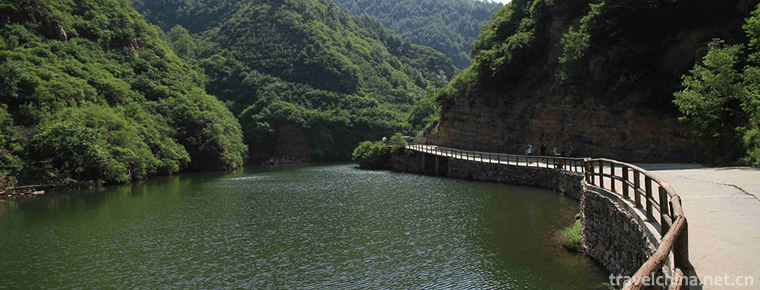
Tianhe mountain
-
Dongping Lake Scenic Spot
The total area of Dongping Lake Scenic Spot is 627 square kilometers, the annual water surface is 209 square kilometers, the average water depth is 2.5 meters, and the total water storage is 4 billion
Views: 201 Time 2018-12-20 -
Dongchang Lake Scenic Area
Dongchang Lake Scenic Spot, located in the southwest of Liaocheng City, a famous national historical and cultural city, belongs to Dongchangfu District and is a national AAAA-level tourist scenic spot
Views: 161 Time 2018-12-20 -
dalian forest zoo
Dalian Forest Zoo is located in Baiyun Mountain Scenic Area, Dalian, covering an area of 7.2 square kilometers. The zoo is divided into two parts: the first phase of captivity and the second phase of
Views: 176 Time 2019-01-06 -
Hailing Island Dajiao Bay Sea Silk Road Tourist Area Yangjiang City
Dajiaowan Scenic Area of Hailing Island in Yangjiang is located in Zhapo Town of Hailing Island, Yangjiang City, Guangdong Province.
Views: 134 Time 2019-01-13 -
Wanjiazhai Water Conservancy Scenic Area of the Yellow River
Wanjiazhai Water Conservancy Project is located in the canyon of the north main stream of the Yellow River from Toketo to Longkou. It is the first of eight cascades planned and developed in the middle
Views: 245 Time 2019-01-18 -
Dian Opera
Yunnan Opera is one of the local operas in Yunnan Province. Silk string (originated from the earlier Qin Opera), Xiangyang (originated from the Xianghe School of Han Diao) and Huqin (originated from H
Views: 174 Time 2019-04-26 -
Fishing Drum of Hongze Lake
The fishing drum of Hongze Lake, also known as Duan Encouragement, is a form of dance in which the singing and dancing were combined in a specific area when the old Shenhan burned paper for fishermen
Views: 233 Time 2019-05-03 -
Production Techniques of Flower Tea
Jasmine tea, also known as jasmine fragrance, is the tea and jasmine flowers to blend, bass, so that tea leaves absorb flower fragrance into tea, tea fragrance and jasmine fragrance interactively inte
Views: 197 Time 2019-05-04 -
Paper Paper Paper Processing Techniques
Traditional processing paper is to make raw paper into processing paper by dyeing, sizing, powder filling, waxing, mounting, spraying gold, leveling, watermarking, painting and other processes, in ord
Views: 286 Time 2019-07-25 -
Gongga Mountain
Gongga Shan, also known as Minya Konka, is located in the south of Kangding, Sichuan Province. It is the main peak of Daxue mountain. There are 45 peaks with an altitude of more than 6000 meters.
Views: 128 Time 2020-10-13 -
Former site of Brazil Conference
The former site of the Brazil conference, formerly known as Banyou temple, is located in Brazil township of Zoige county (which belonged to Songpan County before 1956) at the southeast border of Aba Prefecture and Gansu Province. It is near the edge of grassland and is a semi agricultural and semi pastoral Tibetan inhabited area, 32 kilometers east of Zoige county.
Views: 128 Time 2020-11-07 -
Leshan social service
By the end of 2018, there were 13 social welfare homes in Leshan City with 2908 beds and 2182 people in the hospital. The sales of social welfare lottery tickets totaled 385.69 million yuan, raised 109.75 million yuan of welfare lottery public welfare fund,
Views: 177 Time 2020-12-17

